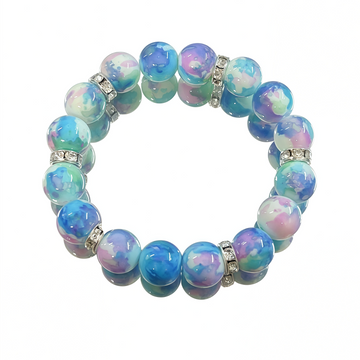Daily Self-Inspection and Early Problem Detection for Stone Bangles
Stone bangles, crafted from natural materials like jade, agate, or quartz, require consistent observation to identify issues before they escalate. Regular self-checks help maintain their structural integrity, aesthetic appeal, and cultural value. By integrating simple inspection routines into daily handling, owners can address minor concerns proactively, ensuring longevity and preserving the bangle’s significance.
Visual Inspection for Surface and Structural Changes
Begin by examining the bangle under natural light, rotating it slowly to assess all angles. Look for subtle shifts in color, such as uneven fading or darkening, which may indicate prolonged exposure to sunlight or chemical contact. Check for surface scratches or pitting, particularly on softer stones like turquoise or opal, which are more vulnerable to abrasion. Small cracks or hairline fractures are easier to miss but critical to detect early, as they can expand under pressure or temperature changes. Use a magnifying glass for closer observation if needed, focusing on areas near settings or engravings where stress might concentrate.
Pay attention to the bangle’s overall shape. Warping or bending, though rare in solid stones, can occur if the material is brittle or has internal flaws. Compare the current form to its original state (if documented) or check for symmetry in patterns or carvings. Asymmetry might suggest structural weakness or accidental impact damage.
Checking for Loose Components or Wear in Settings
If the bangle includes metal accents, beads, or inlays, inspect these elements daily for stability. Gently wiggle each component to test for looseness. A rattling sound or visible movement indicates that adhesives or prongs may have degraded, risking the loss of decorative pieces. For bangles with adjustable cords or knots, examine the fibers for fraying or discoloration, which could lead to breakage if not reinforced.
Metal settings around stones should be free of tarnish or corrosion, as these can spread to adjacent materials over time. Use a soft cloth to wipe away surface grime, but avoid harsh chemicals that might react with the stone. If the bangle features enamel or painted details, check for chipping or flaking, which can expose the underlying material to moisture and accelerate deterioration.
Assessing Comfort and Fit to Prevent Accidental Damage
A well-fitting bangle stays securely on the wrist without causing discomfort. If the piece suddenly feels too tight or loose, it may have undergone subtle changes in shape or size due to temperature fluctuations or internal stress. Forcing a bangle over the hand or wearing it during activities that apply pressure (e.g., lifting weights) increases the risk of cracks or fractures.
Pay attention to skin irritation, which might signal hidden damage. Rough edges or protruding settings can go unnoticed until they cause redness or abrasions. If the bangle leaves marks or feels uneven against the skin, remove it immediately and inspect for structural issues. Adjusting the fit or redistributing weight evenly (if possible) can prevent further problems.
Monitoring Environmental Interactions for Long-Term Preservation
Daily handling exposes bangles to environmental factors that may not cause immediate damage but accumulate over time. After wearing, check for moisture residue, especially if the bangle was exposed to sweat, rain, or humidity. Pat dry with a soft cloth and allow it to air out in a cool, dry place away from direct sunlight.
If the bangle is stored in a shared jewelry box, inspect it for scratches from contact with harder materials like metal or gemstones. Consider using individual pouches or compartments to minimize friction. For bangles with organic components (e.g., wooden inlays or silk cords), sniff for musty odors, which indicate mold growth due to improper storage conditions.
By incorporating these checks into routine care, owners can identify and mitigate risks before they compromise the bangle’s condition. This proactive approach not only extends the lifespan of the piece but also reinforces its role as a cherished heirloom or cultural artifact.







